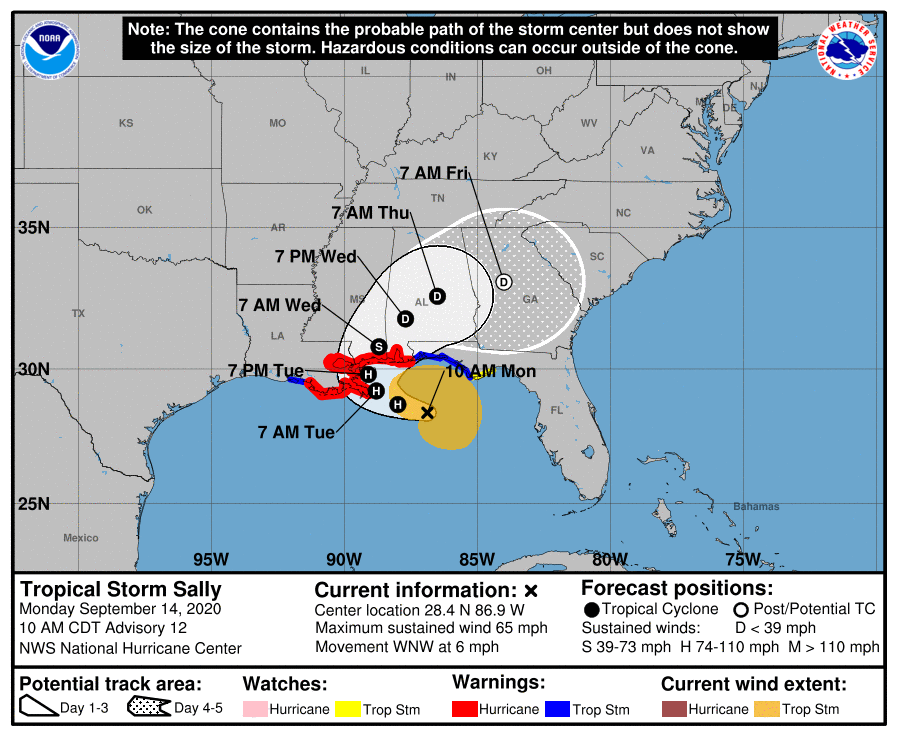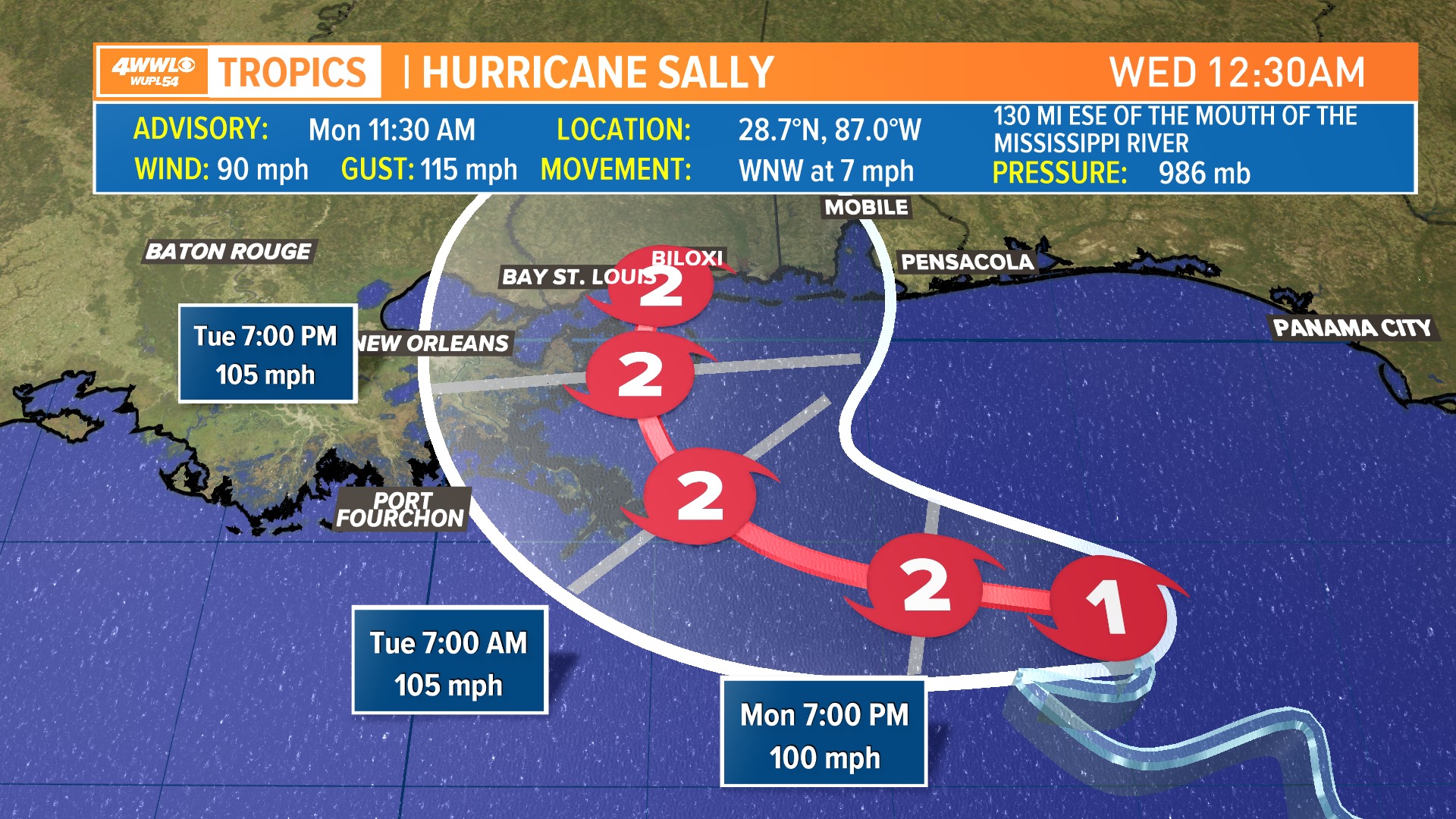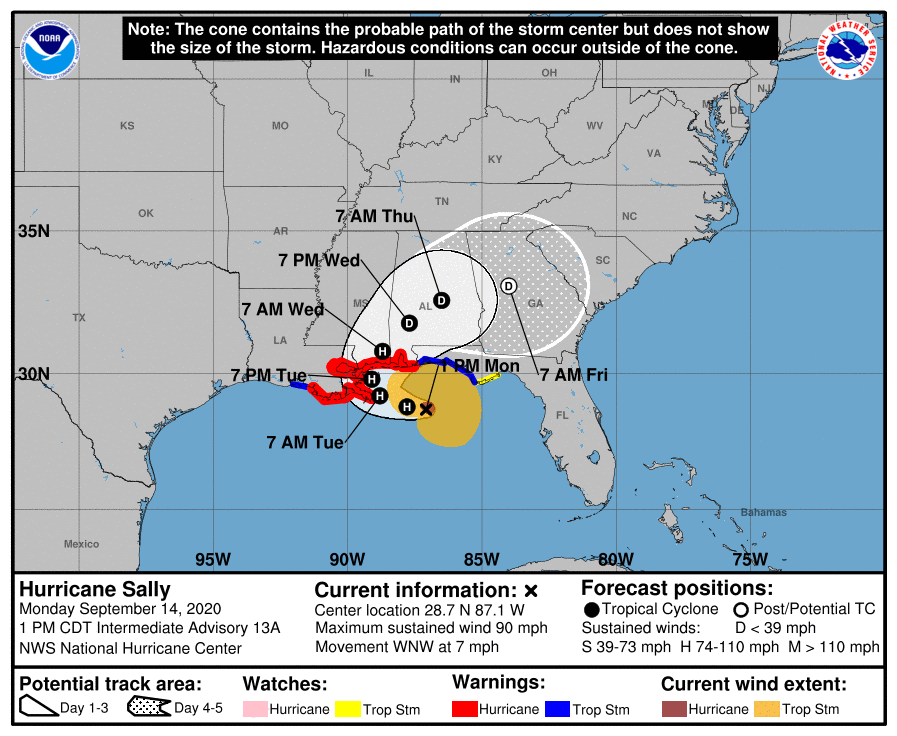
Sally strengthens into a hurricane
September 14, 2020
Nicholls named Top Public Regional University in Louisiana for Third Straight Year by U.S. News & World Report
September 14, 2020Hurricane Sally is meandering around in the Gulf, gathering strength. The storm is expected to now be a category 2 storm at landfall. While the path of the storm is never set in stone and can always change at the last minute, the newest update keeps Terrebonne and Lafourche out of the cone.
At 1 p.m. CDT, the center of Hurricane Sally was located about 125 miles (200 km) east-southeast of the mouth of the Mississippi River and about 160 miles (260 km) southeast of Biloxi, Mississippi. Sally has been meandering over the north-central Gulf of Mexico today, but a west-northwest near 7 mph (11 km/h) should resume later today. A decrease in forward speed and a turn toward the northwest is forecast tonight and a northward turn is expected sometime on Tuesday. On the forecast track, the center of Sally will move over the north-central Gulf of Mexico today, approach southeastern Louisiana tonight, and make landfall in the hurricane warning area on Tuesday or Tuesday night. Afterward, Sally is expected to move slowly north-northeastward near the northern Gulf Coast through Wednesday.

Maximum sustained winds are near 90 mph (150 km/h) with higher gusts a category 1 hurricane on the Saffir-Simpson Hurricane Wind Scale. Hurricane-force winds extend outward up to 25 miles (35 km) from the center and tropical-storm-force winds extend outward up to 125 miles (205 km). Additional strengthening is forecast to take place during the next day or so, and Sally is expected to be a dangerous hurricane when it moves onshore along the north-central Gulf coast.
The combination of a dangerous storm surge and the tide will cause normally dry areas near the coast to be flooded by rising waters moving inland from the shoreline.





